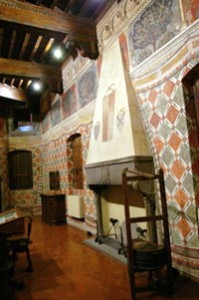The Davanzati Palace Museum is finally – after over 15 years of restoration – open to the public and is well worth a visit. An added benefit is that the madding crowds of Florence haven’t found it – yet.
The Palace, built by the Davizzi family around mid-14th century, was purchased in 1578 by the Davanzati family and remained in their possession until 1838, when it was divided into several separate apartments, causing severe damage to the mix of Medieval and Renaissance interior design.
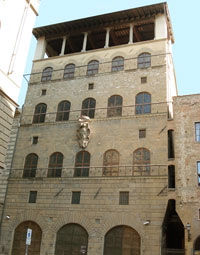
In 1904, it was purchased, restored to its 14th century structure, and filled with 14th to 16th century furnishings by the antique dealer Elia Volpi, who opened it to the public in 1910 as Museum of the Old Florentine House. The contents of the museum kept changing because Volpi kept selling pieces of the collection, including virtually all of the contents in a controversial auction held in New York in 1916. (Volpi was sued, thereafter, for allegedly selling a fake Rubens and a fake Van Dyck – see the 1919 NY Times article.)
Volpi sold the palazzo in the 1920s to two Egyptian brothers. In 1951, the Italian State purchased the empty building, restored and refurnished it and opened it once more to the public in 1956.
The Palace’s most important feature is its architectural structure, which represents a rare example of 13th century noble home, showing the transition stage from the medieval tower house to a grand Renaissance building. The original façade opened into a ground floor three-arch loggia (porch – now closed) and was used as a cantina and mercantile space. A 16th century loggia replaced the medieval battlements at the top of the building.
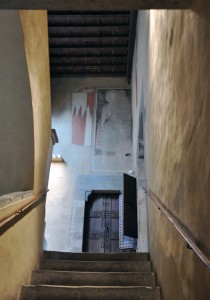
The interior courtyard gives access to the stone and wood staircase with rampant arches leading up to the four upper floors. There are large audience halls, dining rooms, bedrooms and agiamenti (toilets – a rarity in elegant houses of the period). All the rooms have floors in cotto and ceilings in wood. The walls of many of the rooms are decorated with frescoes and decorations that are quite popular in Florentine 13th century homes, representing curtains and coat of arms. The most beautiful rooms are the Sala dei Pappagalli (the Parrot Room) and the bedroom with scenes of the tale of the Lady of Vergi and her knight.
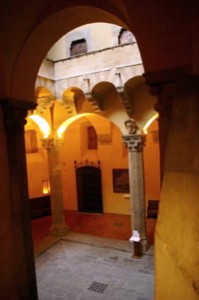
The present arrangement of the Museum reconstructs the setting of an old Florentine home, with furniture and household tools from the 14th to the 19th centuries. Bedrooms display ornate beds and linen chests, while the audience hall on the first floor exhibits a rare 16th century Sienese painted cabinet, a 15th centry painting showing the Game of Civettino and a marble bust of a child by Antonio Rossellino.
The kitchen on the third floor exhibits furniture and ordinary daily household items, together with working tools, like looms, warping machines and spinning wheels.
Included in a separate display is a very fine collection of lacework and samplers, ranging from the 16th to the 20th centuries.
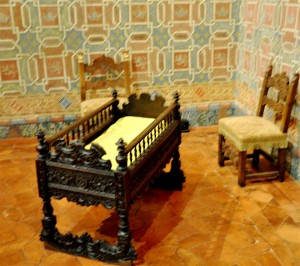
The only disconcerting thing about a visit to this unique museum is that you cannot count of all four floors being open on any particular day at any specific time. Your four euro ticket may give you access to all four floors (a bargain) or it may only provide you a glimpse of the ground and first floor (interesting, but perhaps not worth the price). It may help to ask before you buy your ticket. It may not.
Palazzo Davanzati
Address: Via Porta Rossa 13 – Firenze
Hours: Weekdays: 8.15 am – 1.50 pm; open second and fourth Monday of the month. Holidays: 8.15 – 1.50 pm – open first, third and fifth Sunday of the month. Closed on: the second and fourth Sunday of the month; the first, third and fifth Monday of every month. December 25, January 1, May 1.
Entrance: 3 euro
